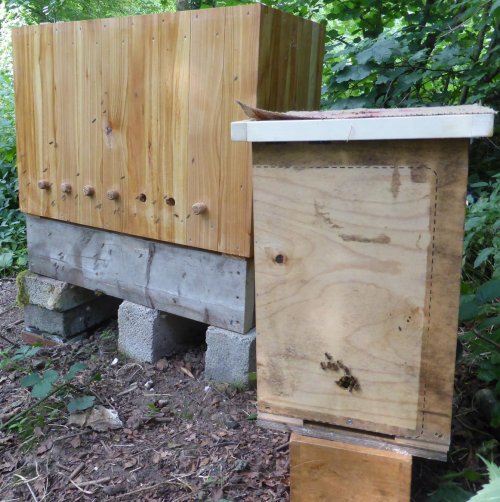
The Modified Golden Hive
The Modified Golden Hive is collaboration between John Haverson and Matt Somerville. It is a development of the German Einraumbeute hive, a one-box or trough hive that is often called the 'golden hive' amongst anglophone beekeepers, and is designed to meet the Demeter organic beekeeping standards. The term 'golden' stems from the fact that the frame dimension accord with the golden sectio/ratio, as does the box of the 'Einraumbeute'. The primary aim of this hive is to give the colony uninterrupted vertical space to enable it to express its natural comb building behaviour as well as to self-regulate its nest environment.
Using natural materials as much as possible the modified golden hive adopts features from the hives of Warré and Lazutin as well as those seen in skeps and tree trunk cavities.
The long deep trough hive uses up to 22 Dadant sized frames approximately 18" deep and 11" wide. This tall, narrow configuration enables the winter colony to sit in 9 or 10 frames under its stores to prevent the isolation starvation sometimes seen in wider, shallow hives.
The horizontal configuration is attractive as the operation is reduced to moving frames horizontally rather than lifting boxes vertically. In the case of minimal intrusion husbandry, it also enables less disruptive, less comb-damaging access from one side of the nest for essential inspections.
To address concerns expressed about condensation and the retention of nest scent and warmth (Nestduftwärmebindung), we decided to adopt the Warré top-cloth and deep quilt arrangement as well as insulated walls similar to Lazutin's hive, but using a cedar-straw-cedar sandwich. A sump with an inspection hatch is also incorporated; to keep nest debris away from combs; to enable non-intrusive inspection of combs and floor debris as well as the placement of a heat-retaining moisture-absorbing floor covering in winter.
To optimize these design features a minimal intervention husbandry is required.
John Haverson, 19 Aug 2014
Populating the hive
A Warré-format bait hive had been set up with eight of the modified golden hive frames, while work continued to complete the modified golden hive. On 5 July 2014, it was populated with a swarm. After three weeks (26 July 2014) the frames were transferred to the main hive as shown in the sequence of photos.
Below: modified golden hive (left) with Warré-format bait hive containing colony for transfer

Below: frame 1 being transferred to the modified golden hive (note 'V' shaped comb guide)
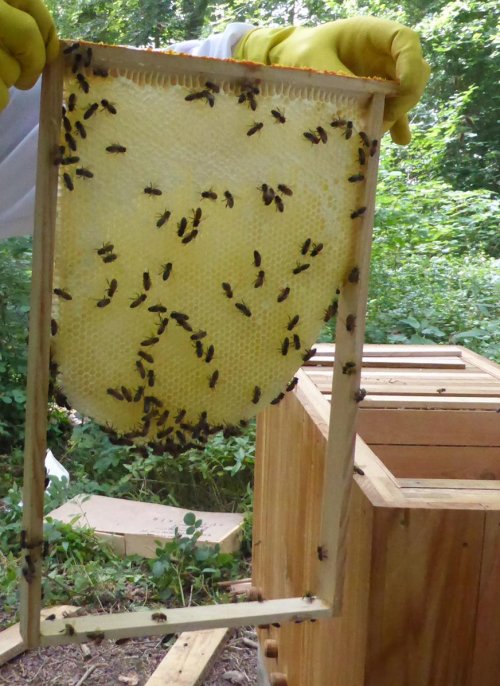
Below: frames 4 (left) and 6 (right) being transferred
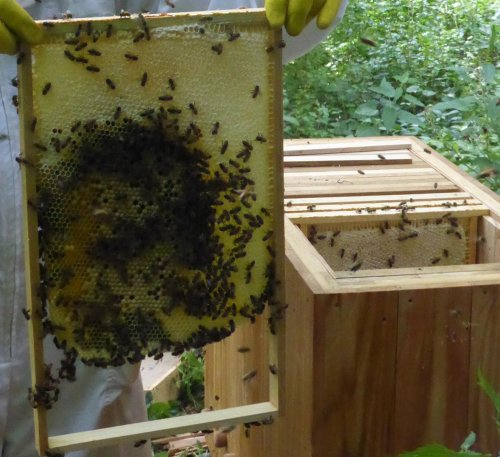
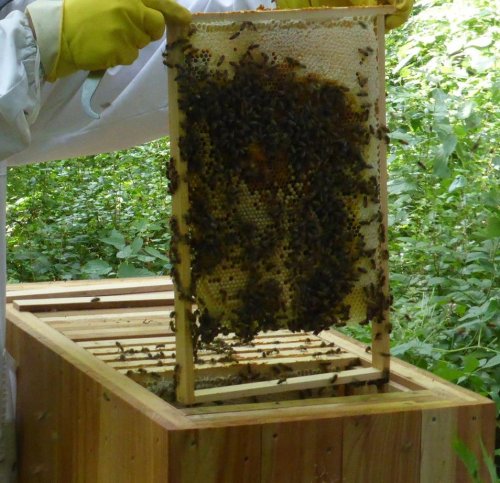
Below: frame 7 being transferred
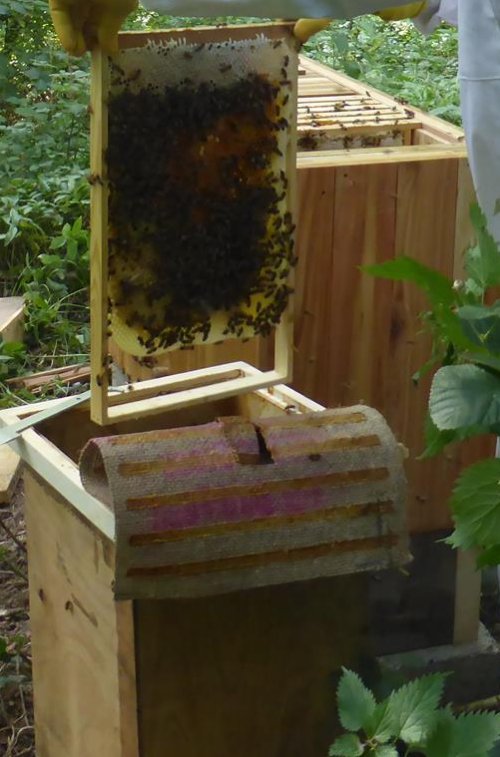
Frames were spaced using 8mm gauges. A straw-filled divider board was put next to the frames which were covered with a hessian top-cloth, stiffened by sizing with flour paste.
Below left: 2-walled division board packed with straw. Below right: spacing frames with 8mm gauge
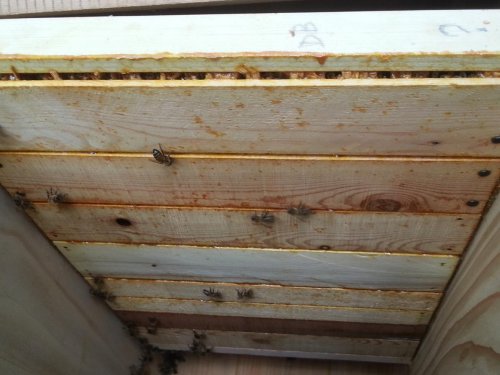
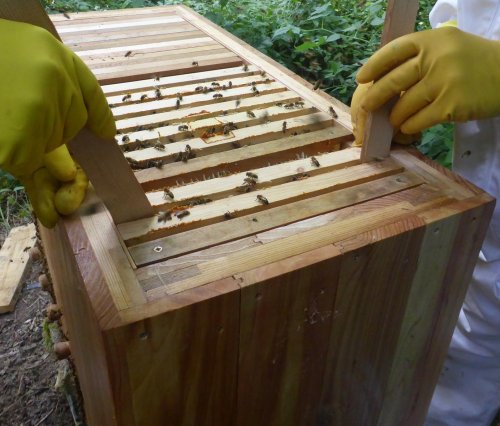
Below left: eight frames with divider board in foreground. Below right: fitting the stiffened hessian top-cloth
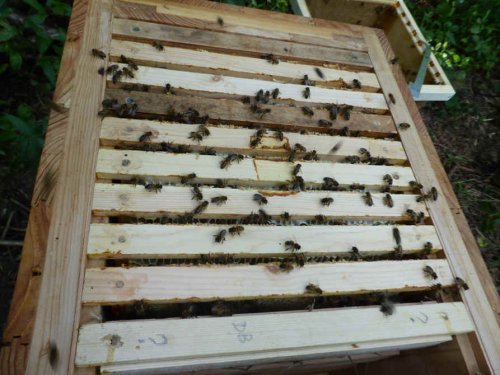
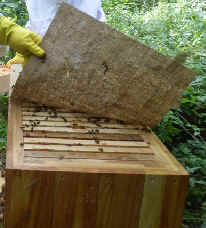
Below left: placing quilt boxes on hessian top-cloth. Quilt
boxes filled with wood shavings help keep in the heat but allow moisture through.
Below right: fitting ventilated roof with mouseboard incorporated
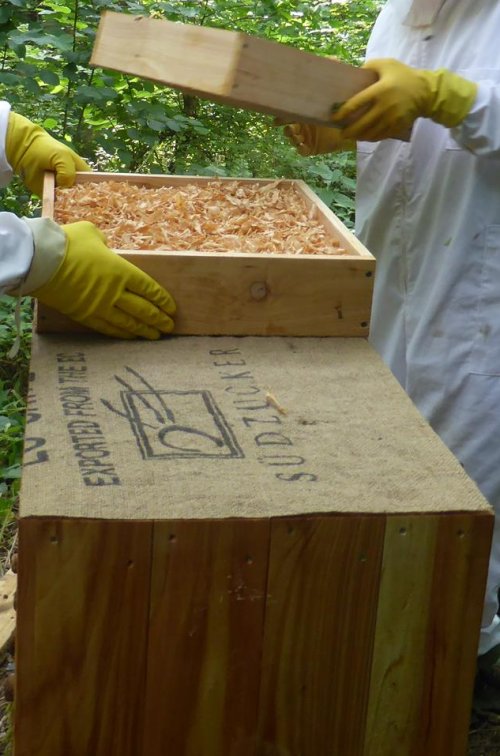
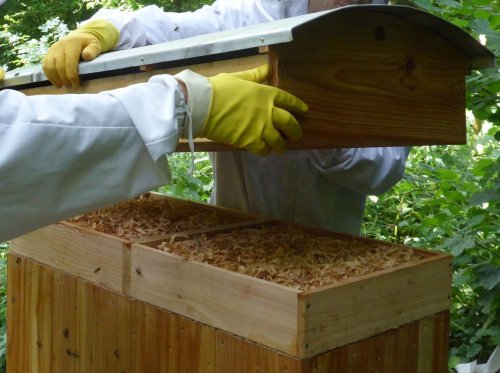
Below left: stray bees allowed to run in. Below right: rear of hive removable inspection hatch with vents.
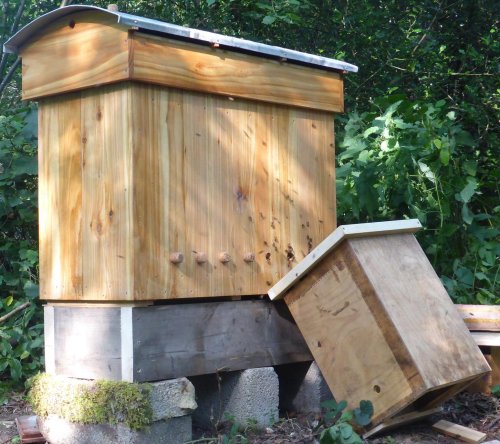
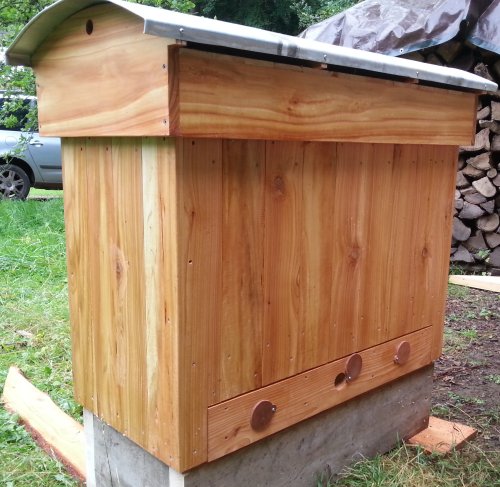
After one week the colony was checked to ensure it had sufficient space. The divider board had been sealed up with propolis and the comb on frame one had grown with increased quantities of honey.
16 March 2015
Three developments added:
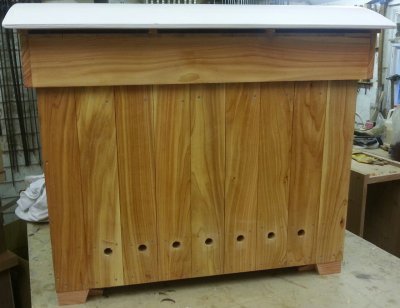
Construction
Below: cross section of hive through a frame and entrance hole.
For full construction details click
here (PDF, 640k).
Below right: modified golden hive internal framework assembled.
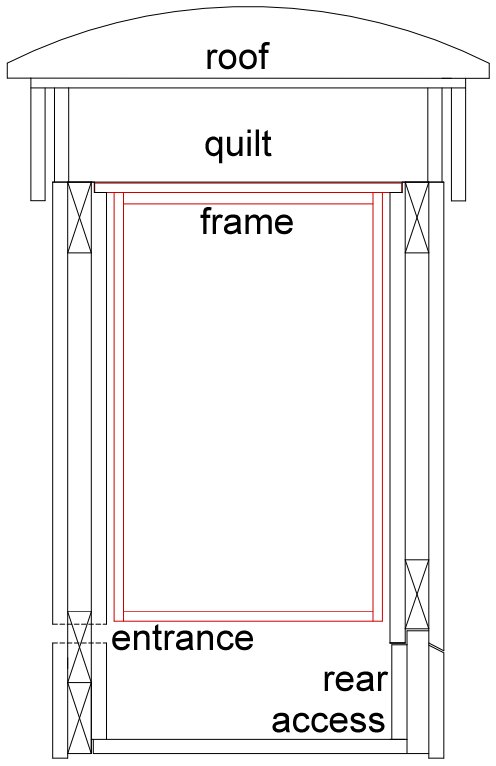
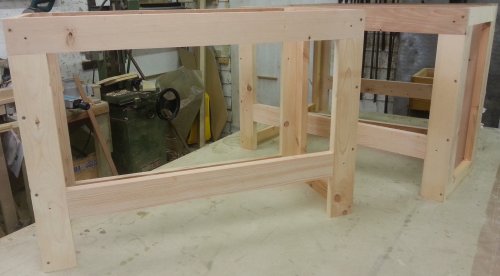
Progress reports
Below: Frame 1 after four weeks (3 August 2014)
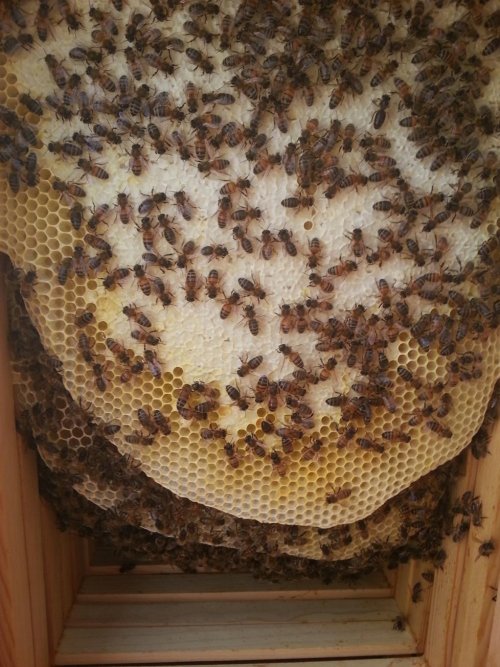
End October 2014
Below: view in through inspection hatch showing sphagnum moss (right) moisture absorber following an indication of Fedor Lazutin; division board (centre) and the bottoms of the frames (left) with temporary wood spacers between them.
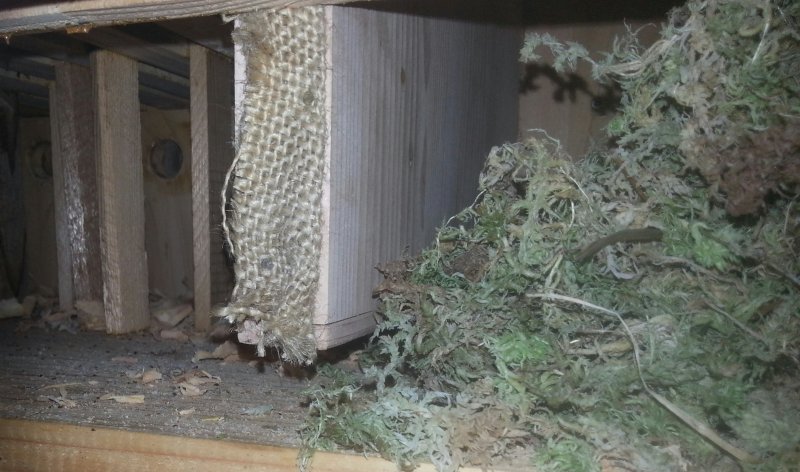
19 March 2015
Below: incoming willow pollen
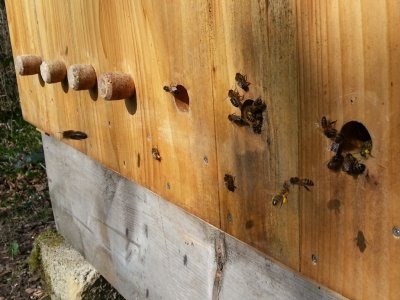
The shavings in the quilt were damp on the unoccupied part of hive, but the box below with the moss was dry. The heat of the colony could be felt with the hand amongst the shavings, allowing the position of the brood to be located. This illustrates well the benefit of having a heat retaining quilt. Tthe third entrance hole from the right (see above) was only recently opened. It tends to be used primarily by going bees, the pollen carriers taking the shortest route to the brood.
6 April 2015
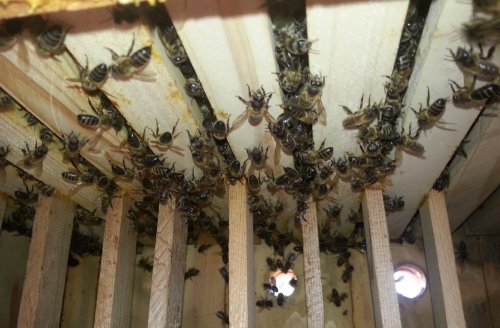 View through rear hatch to
entrances.
View through rear hatch to
entrances.
The colony was expanding rapidly. More frames were added.
15 April 2015
The colony is very vigorous. Condensation has been observed in the quilt above the empty part of the hive, but not above the colony:
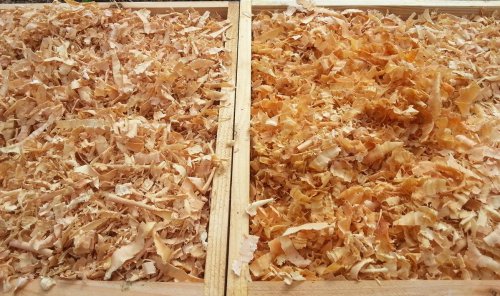 Condensation evident
in the quilt on the right.
Condensation evident
in the quilt on the right.
Holes were drilled in the mouse board under the roof to allow water vapour to be discharged. This caused the quilt to dry out.
20 April 2015
Manufacturing is speeded up, mainly regarding the type of insulation used between the walls. In this version, the insulation is wood fibre board.
Below left: inner box Below right: inner box with spacing battens
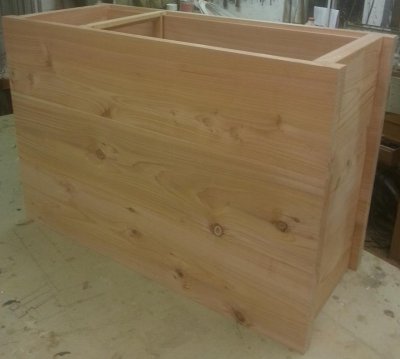
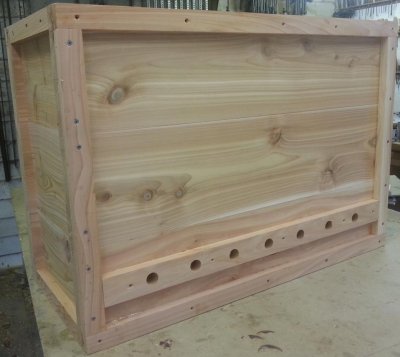
Below left: wood fibre board insulation fitted Below right: outer cladding and 50 mm feet fitted.
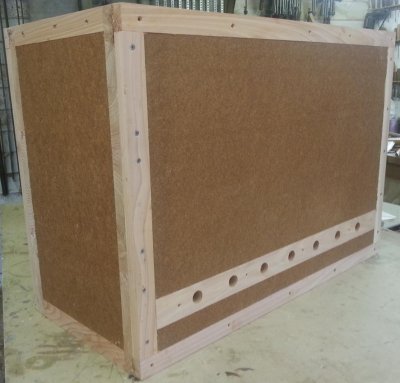
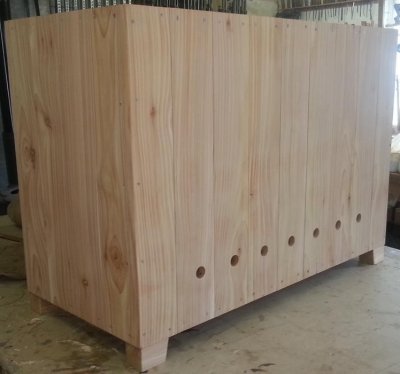
The floor is removable and held in place with turn buttons.
24 April 2015
The photo below shows combs 13 & 14. Two additional frames were added.
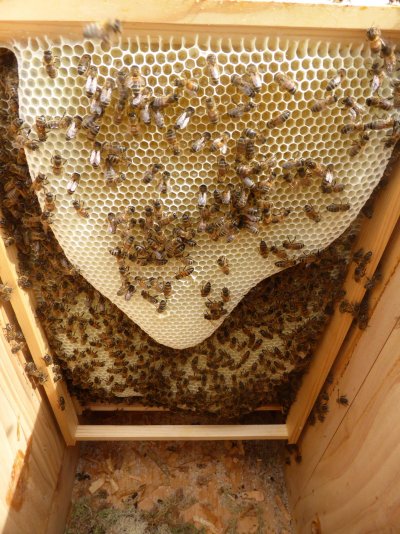
10 May 2015
Helped by nectar flows primarily from rape, dandelion and apple, the two frames added on 24 April were half built. Two additional frames were added.
The photo below shows the underside of the nest viewed through the rear hatch. The vertical pieces of wood are the frame spacers.
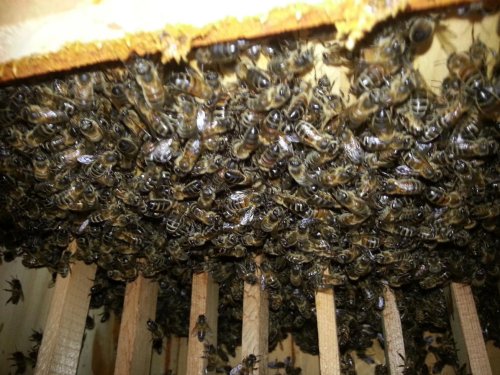
Contact persons for this page:
Matt Somerville, email: matt (at) workingwood (dot)
net -- supplier of golden hive frames and modified golden hives
John Haverson, email: johnhaverson (at) tiscali (dot) co (dot) uk
The modified golden hive at Matt Somerville's website: http://beekindhives.uk/the-modified-golden-hive/
See also David Heaf's 'one-box hive' which borrows from National, Lazutin, Einraumbeute and Warré designs.